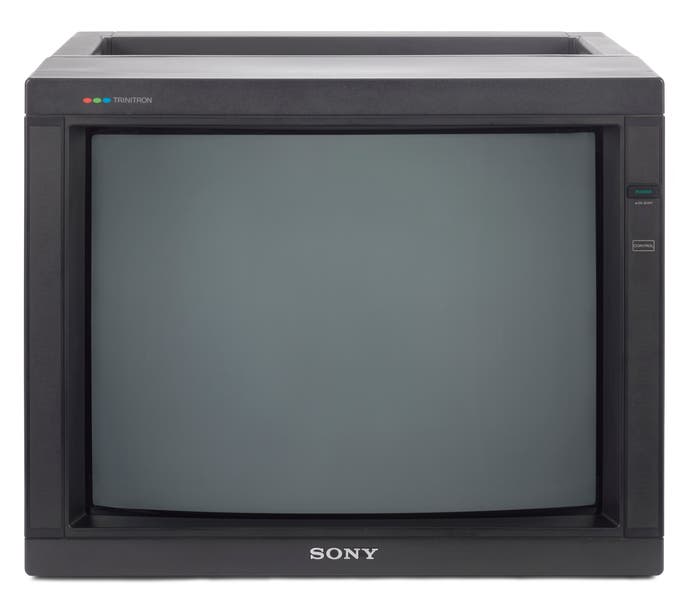Time crisis: Is this the end of the light gun?
As CRT TVs die out, time is slipping away for gaming's lost genre.
For some years I've felt jittery at the absence of a cathode ray tube television in my home, as if I've forgotten to install some crucial appliance, which, worse still, is no longer manufactured. Sure, you're able to plug a Super Nintendo or MegaDrive into a plasma or LCD screen, those size-zero supermodels of the TV world that so cruelly and so swiftly ended the CRT's hundred-year reign at the beginning of this century. But, when forced to perform in high definition, the old consoles pale and shudder. Playing through an HD TV is like gazing at the past through the opposite of rose-tinted spectacles; the games are stretched and smudged, ghosted by modernity. When it comes to remaking vintage games, conscientious developers often attempt to fake the CRT aesthetic, adding scan-lines or screen curves. But, as I recently discovered, you can't fake majesty.
Ever since I sold my 28-inch Sony Trinitron for an idiotic tenner, I've always kept a saved eBay search for a Sony PVM in an open tab. The PVM is the Bentley of the CRT world: a broadcast quality monitor used by production companies for film and TV editing. They once costs thousands but, having been rendered obsolete by the advent of widescreens and then summarily evicted from their Soho offices, can now be bought for a fraction of their original cost. After months of stroking a 'Buy It Now' button, I finally bought a PVM last month, a glorious 1986 model, complete with detachable speakers that, even at a modest volume, make the walls quiver with complaint. The set, a perfect 21-inch cube, is a reminder of how Jony Ive's sensibility has permeated contemporary product design. No white lines and slim trim here: the Sony 2130QM belongs to a different timeline. It's arrogantly chunky, traffic light totems of amber, buttons that light-up the bezels either side of the screen. It could have been ripped from the dashboard of the Nostromo. It is beautiful.
None of that, however, compares to the picture itself. Super Metroid, which shares the CRT's stylistic sense of brooding, futuristic understatement, shimmers on the glass. 4K be damned. In those moments after the screen blinked to life for the first time in my home, and a blood red Nintendo logo emerged from the blackness, I was fully convinced that the future of interactive wonder lies not in the digital foundry, but on the digital scrapheap. Three weeks on and the joy of unpacking dusty consoles and, after an hour or two's picking at tangles of undefeatable wire, hearing them sing again on the stage for which they were designed, is yet to dim.

Inviting a CRT into your home isn't only a way to view the past with clear eyes. It's also the only way in which to re-open a window to a genre that, since the CRT's demise, has been boarded up. Light-gun games were there at the very start of the video game medium. Sega's 1966 arcade game Periscope allowed you to shoot beams of light as if manning the torpedoes on a submarine. Nintendo's Laser Clay Shooting system, designed by Game Boy inventor Gunpei Yokoi in 1973, was one of the company's first digital toys, designed to make use of Japan's deserted bowling alleys. Despite a troubled launch event (a technological fault meant that a young Nintendo employee, Genyo Takeda, had to, somewhat unethically, move the clay pigeons by hand behind the screen to fake the computer's simulation) the installations became a huge success - later re-emerging as Duck Hunt, a light gun game played with the Buck Rogers-y NES Zapper.
For a while, there was a light gun game for every console and inside every seaside arcade, each one using increasingly mean-looking weapons of the sort that, if openly carried outside of the house, might get you shot by police in South London, or hi-fived in Texas. (Namco's GCon series of controllers, which were coloured matte black in Japan, were made with coloured plastic in the West to help prevent potential misunderstandings with law enforcement). Virtua Cop provided the most obvious setting for the light gun game: on-rails shooting gallery of pop-up bad guys. But there was range to the genre's repertoire. Namco's Point Blank was WarioWare for marksmen. Elemental Gearbolt, with its stirring orchestral soundtrack, was a sniper-friendly Panzer Dragoon. With longevity came invention. Time Crisis introduced a pedal that allowed players to duck behind cover. Silent Scope added a thick magnifying glass through which to pick-off unwitting targets on rooftops.

Then, with the death of the CRT, the light gun vanished. The explanation is complicated but interesting, to do with the heightened speed at which contemporary TVs refresh the pixels on screen, which make it impossible for the sensor in the gun's barrel to catch and register a hit as it bounces off the screen. Attempts to adapt the light gun shooter to the new TVs have been scant. Nintendo's Ghost Squad, arguably the best light-gun game made, was able to use the Nintendo Wii's sensor bar as a CRT stand-in. But Namco's Time Crisis 4 for PlayStation 3 was forced to ship with a gaggle of infrared sensors to be installed around the TV. After that fiddly disaster, nobody bothered to pursue things any further when it came to light guns on the home. In this way, light gun games became perhaps the only video game genre forced into obsolescence by technological progress.
It's a counterintuitive loss. The gun remains the most central and relied upon tool in the game-maker's arsenal. It is positioned at the very centre of the medium, figuratively and, in many cases, literally, while bobbing away mid-screen in every first person shooter. Strange then that the most analogous video game form to shooting should have been lost to a technological foible.
Returning to Virtua Cop on my PVM has been a revelation. The chubby, awkward 3D bad-guys may not show off the medium's past in its most alluring guise (leave that to the Sega Saturn's pristine 2D catalogue), but the lack of abstraction between action and theme makes up the difference. Light gun style games may survive yet, albeit in a warped form, via virtual reality - assuming, of course, virtual reality manages to take root. Until then, a CRT is the only way to buy a ticket to revisit this lost genre. Be warned: as the cathode ray tubes expire, one by one, there are fewer tickets available every month.

